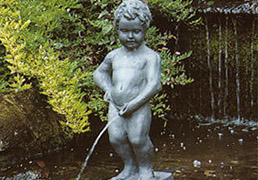Urinary Incontinence
Urinary Incontinence is the involuntary leakage of urine which may cause embarrassment or social/ hygienic problems to a woman. This condition is fairly common, affecting 10-30% of women depending on their age group. There are different types of urinary incontinence.
a. Stress Urinary Incontinence
This type of urine leakage is associated with coughing, sneezing, exercising or any exertion that increases intra-abdominal pressure. This is due to hypermobility of the bladder neck or decreased muscle tone of the urethral sphincter. Management involves pelvic floor exercise or surgery. Medication is not very effective for this condition. We offer the latest continence procedure involving placement of a sub-urethral tape to achieve urinary continence.
b. Urge Incontinence
This type of urine leakage is preceded by a strong desire to pass urine. This is due to uncontrollable and inappropriate contractions in the bladder muscle wall. Management involves restricting fluid intake to about 2 litres a day, bladder training, medication, pelvic floor rehabilitation or electrical stimulation.
c. Overflow Incontinence
The bladder is unable to empty fully and becomes over-distended after a period of time. Ultimately, urine seeps out due to over-distension of the bladder. This is rare in women and can be due to various reasons such as bladder muscle weakness, urethral obstruction or a combination of both. Management depends on the cause.
d. True Incontinence
This occurs if there is an abnormal connection between the urinary tract to the exterior or another organ. The condition can be congenital (i.e. the patient is born with the condition) or occur later on in life due to pelvic cancers, complications of pelvic surgery/radiotherapy or childbearing. Surgical closure is advised if possible.
e. Mix Incontinence
Various types of urinary incontinence may co-exist and management is tailored to the needs of the patient.

